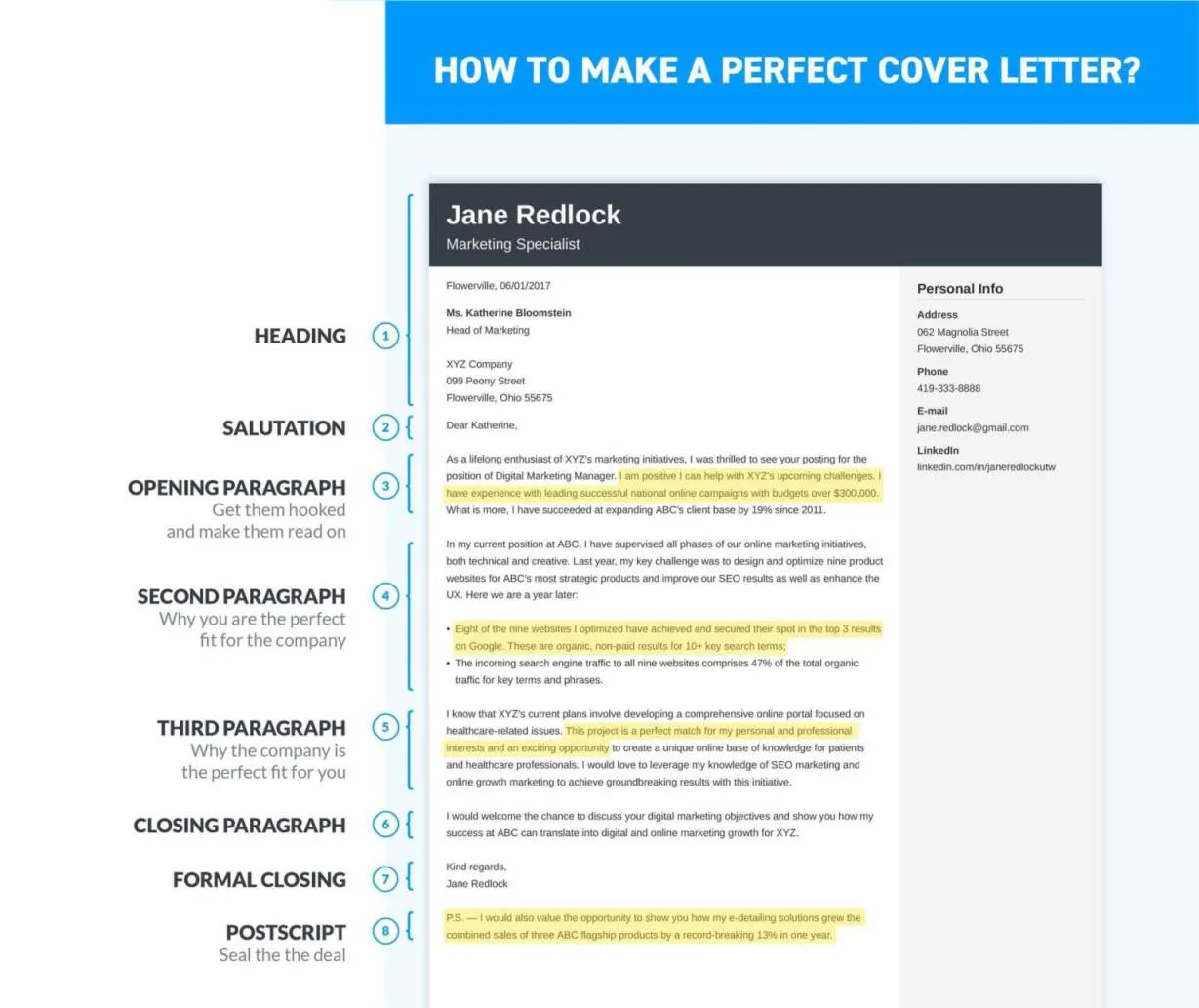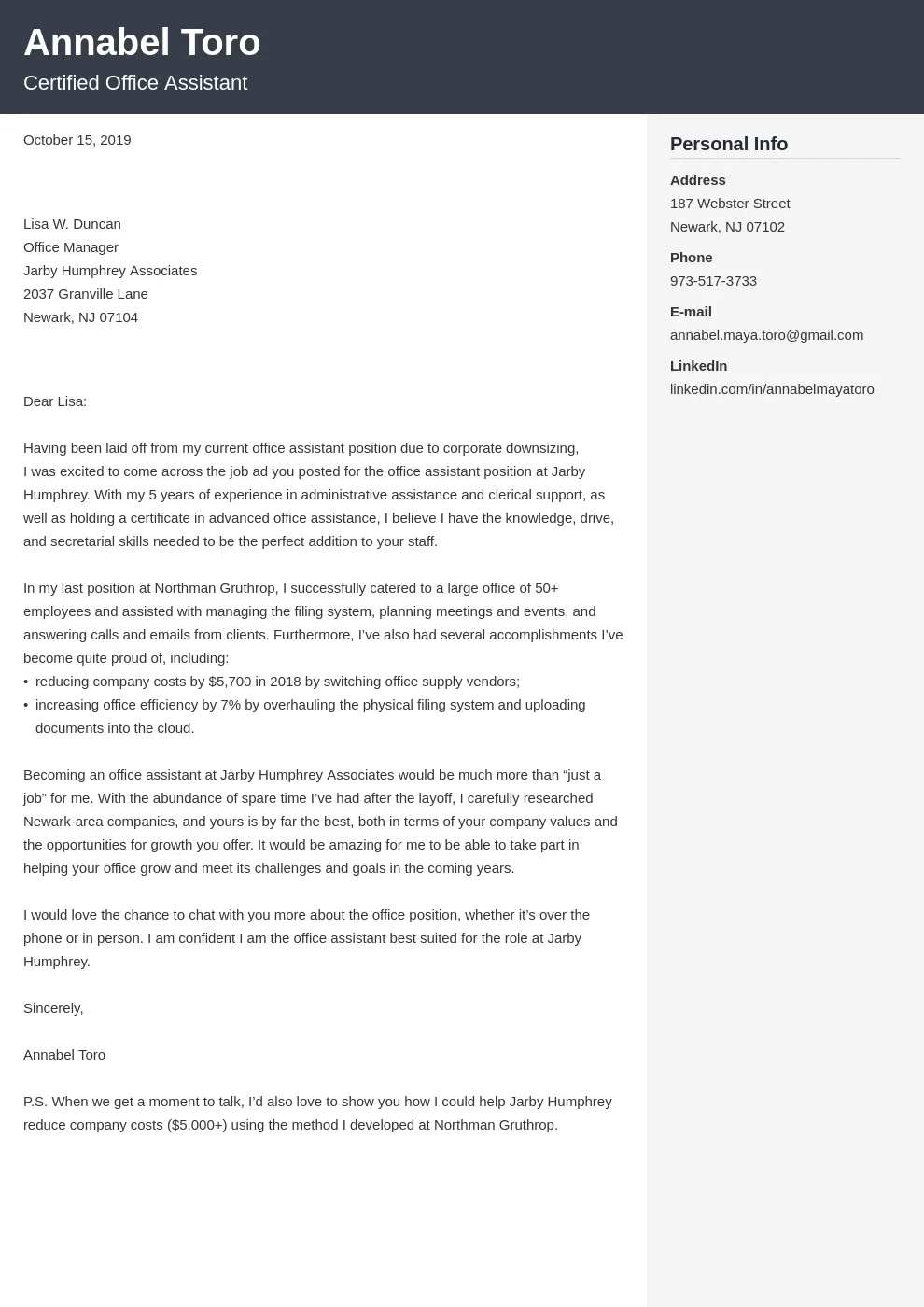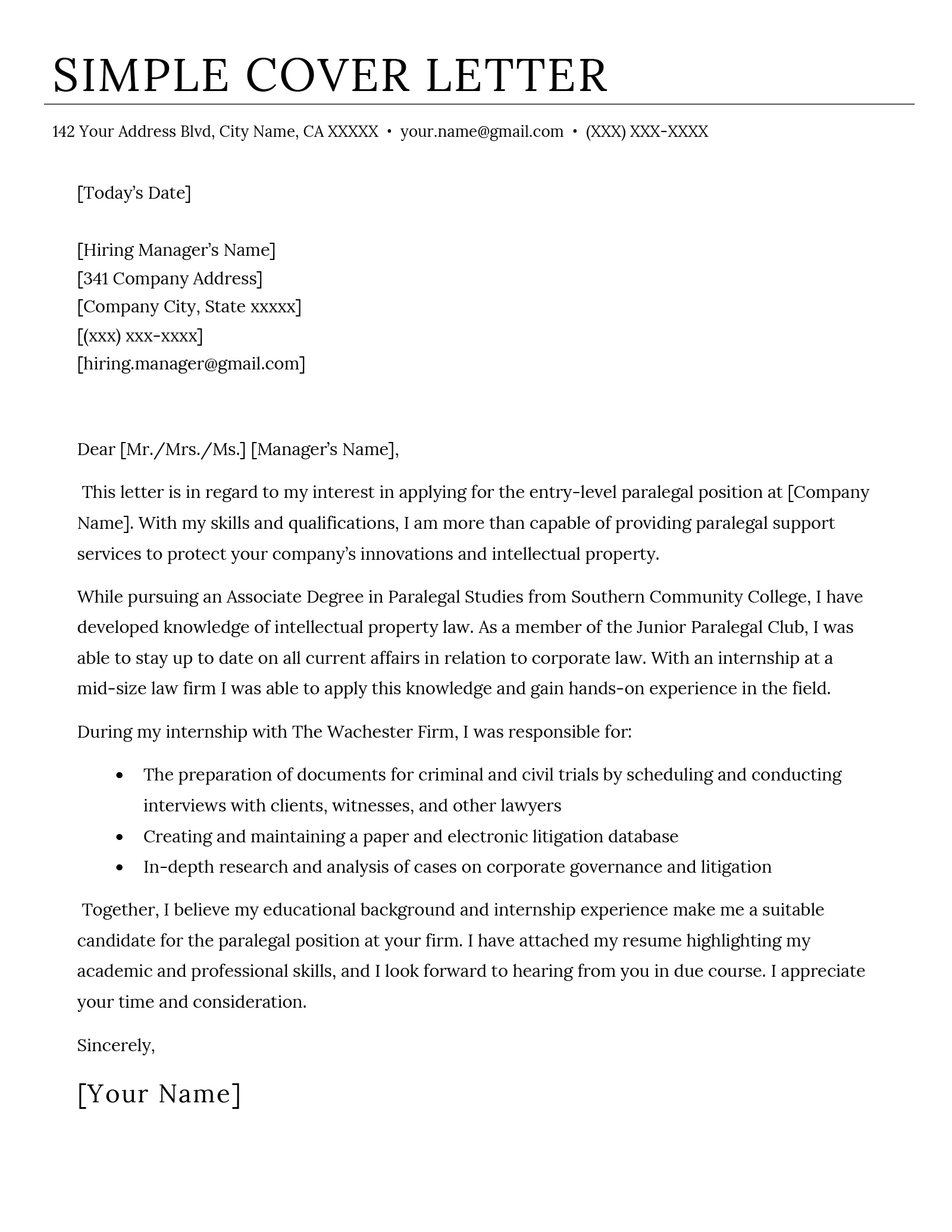What is a Cover Letter?
A cover letter is a crucial document that accompanies your resume when applying for a job. It serves as your initial introduction to a potential employer, providing an opportunity to showcase your personality, skills, and enthusiasm for the specific role. Think of it as your personal sales pitch, designed to persuade the hiring manager to review your resume and invite you for an interview. A well-crafted cover letter can significantly increase your chances of landing an interview and ultimately, securing your dream job. It’s your chance to go beyond the bullet points of your resume and tell a compelling story about why you’re the perfect fit for the position.
The Importance of Cover Letters
In today’s competitive job market, a cover letter is more important than ever. While your resume provides a summary of your qualifications, a cover letter allows you to elaborate on your experiences, highlight your accomplishments, and demonstrate your genuine interest in the company and the specific job. It’s a chance to connect with the hiring manager on a personal level, showcasing your communication skills and conveying your passion for the opportunity. Many employers consider a cover letter essential, viewing it as a critical indicator of your attention to detail, writing proficiency, and overall professionalism. Failing to include a cover letter when requested, or submitting a poorly written one, can immediately disqualify you from consideration.
Top 7 Cover Letter Tips

Crafting a compelling cover letter doesn’t have to be daunting. By following these top 7 tips, you can create a document that effectively highlights your strengths and increases your chances of getting hired. Remember, the goal is to make a strong first impression, demonstrate your value, and ultimately, secure an interview. Each tip focuses on a key aspect of cover letter writing, ensuring you cover all the essential elements for success. By implementing these strategies, you’ll be well on your way to crafting a cover letter that truly stands out.
Highlight Your Skills and Experience (Tip 1)
Your cover letter should immediately highlight your most relevant skills and experiences. Don’t simply list your skills; instead, showcase them within the context of your accomplishments. Provide concrete examples of how you’ve successfully applied those skills in previous roles. This could include mentioning specific projects you’ve managed, problems you’ve solved, or results you’ve achieved. Use action verbs to describe your accomplishments and quantify your achievements whenever possible. Focus on the skills and experiences that align with the job requirements, demonstrating to the hiring manager that you possess the necessary qualifications to excel in the position. Consider using the STAR method (Situation, Task, Action, Result) to structure your examples and make them more impactful. See an example of cover letter header in the image below.
Tailor Your Letter to the Job (Tip 2)
One of the biggest mistakes job seekers make is sending out generic cover letters. Tailoring your cover letter to each specific job is essential. Carefully review the job description and identify the key requirements and qualifications the employer is seeking. Then, customize your letter to directly address those requirements. Highlight the skills and experiences that match what the employer is looking for. Show that you understand the company’s mission, values, and the specific challenges of the role. This shows you’ve done your research and are genuinely interested in the opportunity. A personalized cover letter demonstrates your attention to detail and commitment to the application process, significantly increasing your chances of getting noticed. In the image below, see a good example of cover letter format.
Show, Don’t Tell (Tip 3)

Instead of simply stating that you possess certain skills, demonstrate them through concrete examples. For instance, rather than saying “I am a good communicator,” provide an instance where you effectively communicated with a team, resolved a conflict, or presented information to stakeholders. Describe the situation, your actions, and the positive outcomes. This approach is much more compelling and believable than making unsupported claims. Use specific anecdotes and quantifiable results to back up your claims. This shows the hiring manager the real-world value you bring to the table. By showing, not telling, you make a stronger case for your abilities and make your cover letter more engaging.
Use Keywords from the Job Description (Tip 4)
Many companies use Applicant Tracking Systems (ATS) to screen resumes and cover letters. These systems scan for specific keywords and phrases mentioned in the job description. To ensure your application gets noticed, carefully analyze the job description and identify the key keywords and phrases. Then, incorporate those keywords naturally into your cover letter. This doesn’t mean stuffing your letter with keywords; instead, weave them into your sentences and phrases to describe your skills and experiences. This will help your application pass through the ATS and reach the hiring manager. Tailoring your use of keywords demonstrates your attention to detail and ability to match the job’s requirements. This helps your application become more visible to the hiring team.
Quantify Your Achievements (Tip 5)
Whenever possible, quantify your achievements. Instead of saying “I improved sales,” state “I increased sales by 15% within six months.” Numbers and data make your accomplishments more tangible and impactful. They provide concrete evidence of your contributions and demonstrate your ability to deliver results. Use metrics like percentages, dollar amounts, or units to showcase your achievements. This provides a clear understanding of the impact you’ve made in previous roles. Quantifying your accomplishments makes your cover letter more persuasive and makes you stand out from other applicants. An example of quantifying achievements can be found below.
Proofread and Edit Carefully (Tip 6)

Before submitting your cover letter, proofread and edit it meticulously. Errors in grammar, spelling, and punctuation can create a negative impression and undermine your credibility. Pay close attention to sentence structure, word choice, and overall clarity. Ask a friend, family member, or career counselor to review your letter for any errors you might have missed. A polished and error-free cover letter demonstrates your professionalism and attention to detail. Taking the time to proofread and edit shows that you care about your application and are committed to presenting yourself in the best possible light. A sample of proofread is shown on the image below.
Close with a Strong Call to Action (Tip 7)
Your cover letter should conclude with a strong call to action. Clearly state your interest in the position and your enthusiasm for the opportunity. Express your desire to learn more about the role and the company. Provide a clear and concise call to action, such as requesting an interview or inviting the hiring manager to contact you. Make it easy for the hiring manager to take the next step. A strong call to action leaves a lasting positive impression and increases the likelihood of a response. Your closing paragraph should summarize your key qualifications and reiterate your interest in the position, making sure it reflects the image you want to share with the employer. An example of a call to action can be found in the image below.
Cover Letter Writing Best Practices
Following best practices ensures your cover letter is well-received and effective. Start with a professional greeting, addressing the hiring manager by name whenever possible. Use a clear and concise writing style, avoiding jargon and overly complex sentences. Keep your letter concise, typically no more than one page. Maintain a professional tone throughout the document, showcasing your enthusiasm and professionalism. Tailor your cover letter to each specific job application. Make it easy to read by using short paragraphs, bullet points (where appropriate), and ample white space. Customize the format based on the specific job you’re applying for. A well-structured cover letter follows all the best practices mentioned above. Your cover letter must be polished and professional.
Format and Structure

The format and structure of your cover letter are important for readability and impact. Use a professional business letter format, including your contact information, the date, and the hiring manager’s contact information. Start with a compelling opening paragraph that grabs the reader’s attention. In the body of your letter, highlight your relevant skills and experiences, providing specific examples and quantifiable results. Use clear and concise language, avoiding jargon or overly complex sentences. Use bullet points to make your accomplishments stand out. Close with a strong call to action. Proofread your cover letter carefully before submitting it. Make sure you have a proper cover letter. A well-formatted and structured cover letter is easy to read and understand, making it more likely to impress the hiring manager.
Tone and Style
The tone and style of your cover letter should reflect your personality and professionalism. Use a confident and enthusiastic tone, expressing your genuine interest in the role and the company. Maintain a professional writing style, avoiding slang, contractions, and informal language. Tailor your tone and style to match the company culture and the specific industry. Make sure your writing style is consistent throughout the document. Use action verbs to describe your accomplishments and focus on showcasing your value proposition. A well-written cover letter has a tone and style that is appropriate for the job. A positive and engaging tone can make a lasting impression.
